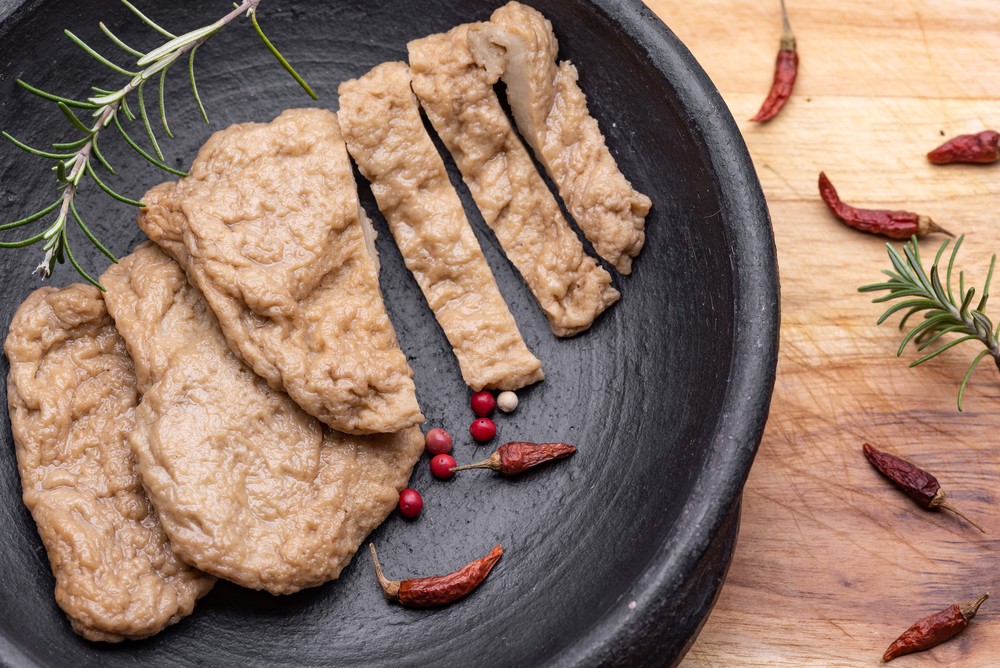Plant-based meats are reshaping the culinary landscape, offering a sustainable and health-conscious alternative to traditional animal proteins. If you’re curious about crafting meat-free alternatives at home, the journey to creating plant-based meat is both rewarding and delicious. Homemade vegan meats cater to dietary preferences and allow you to explore a range of flavors and textures that mimic those of conventional meats.
Making vegan meat at home involves a blend of plant-based ingredients that provide nutrition and substance. From creating a vegan ground beef substitute for taco nights to perfecting a savory vegan steak for your dinner plate, numerous recipes and techniques exist to master. Whether aiming for better health, environmental conservation, or a new culinary adventure, making your own plant-based meat can be an exciting addition to your cooking repertoire.
Key Takeaways
- Homemade plant-based meat offers a versatile and sustainable alternative to animal proteins.
- Learning to make vegan meat can enhance nutrition and cater to health-conscious diets.
- Crafting meat-free substitutes at home allows for culinary creativity and personalization.
DIY Plant-Based Meat
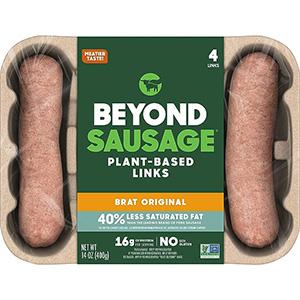 Creating your plant-based meat at home is easier than you might think, and it’s a satisfying way to enjoy familiar flavors with a nutritious twist. You’ll need a food processor to start; this kitchen appliance is your best friend for blending ingredients into the perfect texture.
Creating your plant-based meat at home is easier than you might think, and it’s a satisfying way to enjoy familiar flavors with a nutritious twist. You’ll need a food processor to start; this kitchen appliance is your best friend for blending ingredients into the perfect texture.
First, pick your base protein—standard options include:
- Textured vegetable protein (TVP)
- Cooked lentils or beans
- Chopped mushrooms
You’ll want to bulk up your mixture with fiber-rich ingredients such as:
- Brown rice
- Oats
- Chickpea flour
Now, follow these simple steps:
- Blend your chosen protein with a fiber source in the food processor until you achieve a ground meat-like consistency.
- Season your mixture with salt, pepper, and other spices you enjoy. Don’t be afraid to experiment!
- If your mixture feels too dry, consider adding a vegetable broth or oil splash to bring everything together.
Some recipes may require baking or pan-frying your plant-based meat. Here’s a general guide:
- For baking: Preheat your oven to 350°F (175°C) and spread your meat mixture onto a baking sheet. Bake until it’s firm and has a golden-brown crust, about 30 minutes.
- For pan-frying: Heat a non-stick pan over medium heat, add a dash of oil, and cook your meat until it’s well-browned and crispy.
Remember, you can shape your plant-based meat into burgers, meatballs, or crumbles, depending on your mood. Homemade plant-based meat alternatives offer a canvas for culinary creativity—have fun!
Key Takeaway: With a food processor and a few key ingredients, you can easily make nutritious and tasty plant-based meat at home. It’s a versatile addition to your cooking repertoire that’s both satisfying and good for the planet.
Homemade Vegan Meat
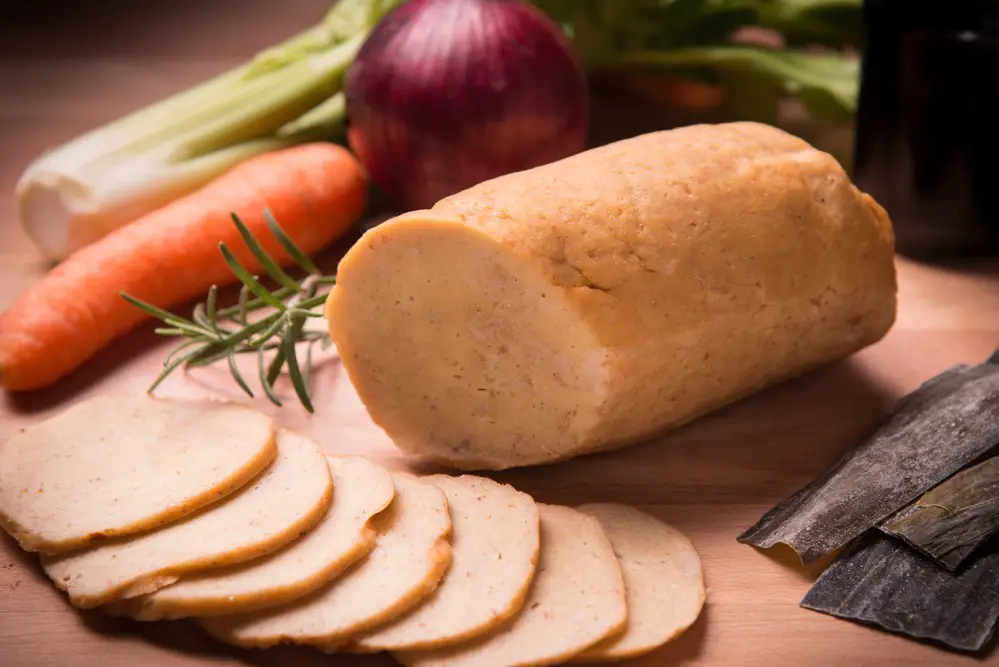
Creating plant-based meat at home is easier than you might think. You’ll need some common kitchen tools—like a good food processor—and a few ingredients to mimic the texture and flavor of meat. Here’s how you can start making your very own vegan meat substitutes.
Ingredients You Might Use:
- Textured Vegetable Protein (TVP)
- Lentils
- Mushrooms
- Nuts
- Seeds
- Olive oil
Getting the Texture Right
To begin, choose your base. Textured Vegetable Protein (TVP) is popular because it has a texture similar to ground beef when hydrated. Black beans or lentils can be mashed for a hearty, ground meat texture.
Flavor Like the Real Thing
Sautéing mushrooms with olive oil can add a savory umami flavor. Don’t be afraid to experiment with nuts and seeds; they provide a rich depth to your vegan meat creations.
The Process
- Start by hydrating your TVP or mashing your lentils or beans.
- Use a food processor to blend the base with spices and binding agents like flaxseed until it reaches the desired consistency.
- Shape your mixture into patties or crumbles.
- Cook as you would with traditional meat—sauté, bake, or grill.
Tip: For an extra kick of flavor, infuse your oil with garlic or herbs before you begin cooking.
Key Takeaway: With the right combination of ingredients and seasonings, you can create delicious vegan meat alternatives that will impress you.
Crafting Vegan Ground Beef
 Creating vegan ground beef is a rewarding kitchen adventure and easier than you think! You’ll need some vital plant-based ingredients to mimic the texture and flavor of traditional ground beef.
Creating vegan ground beef is a rewarding kitchen adventure and easier than you think! You’ll need some vital plant-based ingredients to mimic the texture and flavor of traditional ground beef.
First off, let’s talk about textured vegetable protein (TVP). TVP is a dehydrated soy product perfect for giving your vegan ground beef a meaty texture. Here’s a simple step-by-step guide to get you started:
Ingredients:
- 1 cup TVP
- 1 cup vegetable broth (for rehydrating the TVP)
- 1 tbsp soy sauce
- 2 tbsp tomato paste
- 1 tsp garlic powder
- 1 tsp onion powder
- 1 tsp smoked paprika
- Salt and pepper to taste
Directions:
- Rehydrate the TVP:
- Pour the TVP into a bowl.
- Heat the vegetable broth until it’s almost boiling and pour it over the TVP.
- Let it sit for about 10 minutes until the TVP is soft.
- Flavoring Your Mixture:
- Add the soy sauce and tomato paste to the rehydrated TVP.
- Sprinkle in the garlic powder, onion powder, and smoked paprika.
- Mix well to ensure all the TVP is coated.
- Cooking:
- Heat a pan over medium heat.
- Transfer the TVP mixture to the pan.
- Cook for 5-7 minutes, stirring frequently, until the mixture starts to brown.
- Season with salt and pepper to your liking.
For those who fancy a bean-based alternative, try incorporating a black bean burger mix into your vegan ground beef. Mash up cooked black beans and mix them with the seasoned TVP for a heartier texture.
Making vegan ground beef is all about experimenting with flavors and textures until you find what suits your taste buds. You’re not only creating a delicious meal, you’re also taking a step towards a more sustainable way of eating.
Key Takeaway: Swap traditional ground beef with your homemade vegan version using TVP and simple seasonings; it’s a sustainable choice that doesn’t compromise on texture or taste.
Easy Meat-Free Substitutes

Incorporating meat-free substitutes into your meals can be a delightful and healthy way to mix things up. Here’s how you can seamlessly swap out traditional meat with plant-based options full of flavor and nutrition.
Lentils: A powerhouse of protein, lentils are fantastic in stews, salads, and as a ground beef alternative. They cook pretty quickly and soak up flavors from spices and herbs wonderfully.
- Tip: To mimic ground meat, cook until they’re tender, not mushy.
Mushrooms: With their meaty texture and rich, umami flavor, mushrooms are a natural stand-in for meat in burgers stir-fries, and as a filling for tacos or wraps.
- Strategy: Mix chopped mushrooms with beans or nuts for a satisfying burger patty.
Nuts and Seeds: These add crunch and nutrition. Walnuts or cashews can be ground to create a mince-like texture, while seeds like quinoa or chia can replace ground meat in recipes.
- Use: Blend nuts with lentils or mushrooms for a hearty and dense meat substitute.
Here are some simple strategies to get you started:
- Mix lentils or nuts into rice or quinoa dishes for extra protein.
- Sauté mushrooms with garlic and herbs for a quick topping on whole grain pasta.
- Add seeds like hemp, chia, or flax to smoothies or baked goods for a subtle, nutty taste.
Key Takeaway: Start with familiar foods, integrating these meat-free options where ground meat is typically used. It’s a fun, tasty way to enjoy the benefits of plant-based eating without missing out on texture or flavor!
Delicious Plant-Based Meat Recipes
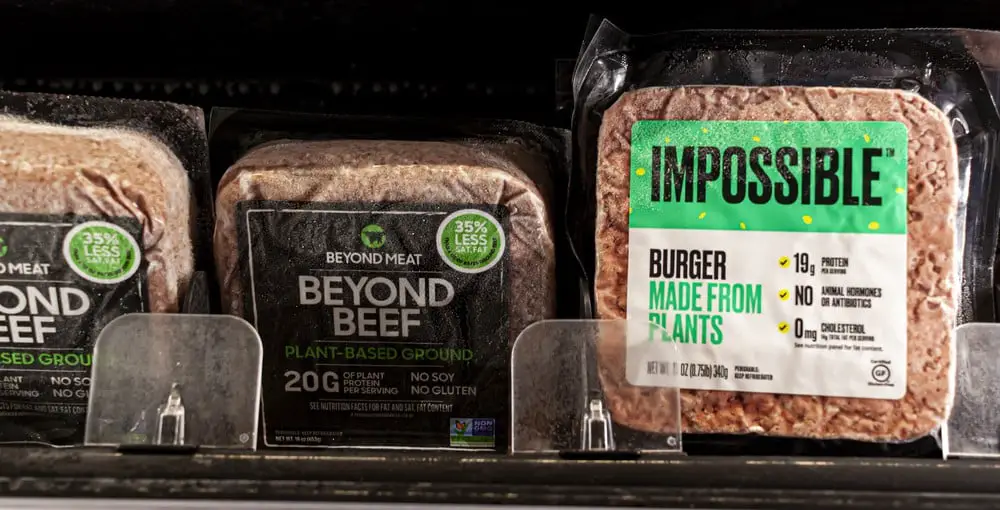
Crafting plant-based meat dishes can be an exciting culinary adventure. Here, you’ll discover recipes that transform simple ingredients into mouthwatering vegan meat alternatives, perfect for satisfying any appetite.
Tasty Vegan Ground Beef Alternatives
When craving that rich and savory flavor of ground beef, turn to plants for a delightful swap. Begin with a base of textured vegetable protein (TVP), an incredibly versatile soy product known for its meaty texture.
Ingredients for Vegan Ground Beef:
- 1 cup TVP (textured vegetable protein)
- 1 tbsp soy sauce or tamari for a gluten-free option
- 1/2 tsp garlic powder
- 1 tsp smoked paprika
- Salt to taste
- 1/4 cup diced onion
Cooking Instructions:
- Rehydrate TVP in hot water for about 10 minutes or until soft.
- Drain any excess liquid from TVP and toss it into a pan.
- Sauté with soy sauce, garlic powder, smoked paprika, and onions until the mixture is well-seasoned and browned.
- Taste and adjust salt as needed.
Key Takeaway: If you’re looking for that meaty bite, TVP is a simple base to mimic the texture of ground beef, and with a few flavorful spices, your taste buds will hardly notice the difference.
Step-by-Step Vegan Meat Guide
Creating your vegan taco meat is straightforward and fun. You’ll use lentils as a hearty and nutritious base. They’re perfect for spicing up your taco nights or packing a protein-rich punch to your vegan crunch wrap.
Lentil Taco Meat Recipe:
- 1 cup dry green or brown lentils
- 2 cups water or vegetable broth for extra flavor
- 1 tbsp olive oil
- 1 tsp chili powder
- 1/2 tsp paprika
- 1/2 tsp garlic powder
- Salt to taste
Instructions:
- Cook lentils in the water or broth until tender, usually about 20-25 minutes.
- Once the lentils are cooked, drain the excess liquid and let them cool slightly.
- Heat olive oil in a skillet and add the cooked lentils.
- Season with chili powder, paprika, and garlic powder.
- Sauté until the lentils are crispy and well-seasoned.
Key Takeaway: Lentils are not just nutritious; they serve a fantastic texture just right for your vegan tacos – experiment with different spices to create your unique twist.
Mastering Vegan Meat Techniques
Creating plant-based meat at home is an enjoyable and creative process. You’ll love the variety of flavors and textures you can achieve with simple techniques. Let’s dive in!
Choosing Your Base
Start by selecting your plant protein; common options include:
- Lentils
- Chickpeas
- Tempeh
- Textured vegetable protein (TVP)
Flavoring Your Meat
Next, amp up the taste. Incorporate:
- Soy sauce or tamari for umami
- Nutritional yeast for a cheesy note
- Liquid smoke for a hint of barbecue
- Your favorite spices for personal flair
Binding It Together
A suitable binder ensures your vegan meat holds up well. Use:
- Flaxseed meal
- Mashed potatoes
- Vegan egg substitutes
Cooking Tactics
For cooking, consider your end goal:
- Saute: Quick and straightforward for a crispy texture. Preheat your skillet over medium heat.
- Bake: Perfect for firmer outcomes. Preheat your oven accordingly.
Freezing and Storage Tips
To save some for later:
- Cool your vegan meat completely.
- Pack it in airtight containers.
- Label containers with the date before you place them in the fridge or freezer.
Remember, fridge storage is suitable for a few days, while freezing extends its life to a few months.
Key Takeaway
Embrace experimentation and find what works best for your tastes and recipes. Soon, you’ll be crafting delicious vegan meat alternatives with confidence!
Versatile Uses for Vegan Meat
Vegan meats offer an exciting range of applications in the kitchen. Whether you’re a seasoned chef or just starting, embracing the versatility of plant-based meats can lead to mouthwatering dishes that are also high in protein.
Creating Hearty Vegan Meatballs
You can whip up meatballs that even meat lovers will crave. Start by combining vegan ground meat with breadcrumbs, a splash of soy sauce, and some vegan Worcestershire sauce for depth of flavor. Add nutritional yeast for a cheesy note and spices like oregano and basil to round it all out.
Ingredients:
- 1 cup vegan ground meat
- 1/4 cup breadcrumbs
- 1 tbsp soy sauce
- 1 tsp vegan Worcestershire sauce
- 2 tbsp nutritional yeast
- 1/2 tsp each of dried oregano and basil
Mixing Instructions:
- Combine all ingredients in a bowl.
- Shape the mixture into balls.
For an extra flavor boost, marinate your meatballs in a blend of vegetable broth and spices for at least 30 minutes before cooking.
Key Takeaway: Vegan meatballs are simple to make and are perfect for spaghetti nights or as appetizers!
Innovative Casseroles and Loaves
Transform vegan meats into comfort foods like casseroles and meatloaf. Mix them with vegetables, grains, and sauces to create a one-dish wonder that’s easy to prepare and perfect for leftovers.
Casserole Idea:
- Layer vegan meat chunks, diced veggies, and cooked rice in a baking dish.
- Pour a mixture of vegetable broth and a dash of soy sauce over.
- Bake until bubbling and golden.
Meatloaf Method:
- Combine vegan ground meat with minced onions, breadcrumbs, and a flax egg.
- Press into a loaf pan.
- Glaze with a mixture of ketchup and vegan Worcestershire sauce before baking.
Remember, vegan meat can shine in a shepherd’s pie with its savory layering, quickly substituting the traditional ground meat filling.
Key Takeaway: Whether a hearty meatloaf or a nourishing casserole, incorporating vegan meats into these dishes adds a protein-packed punch and opens the door to numerous flavorful experiences.
The Health Perspective
When embracing plant-based meats, you’re likely looking for a healthful twist to your diet. It’s essential to consider what goes into these products to ensure they align with your wellness goals. Not all plant-based meats are created equal—some might be high in sodium or saturated fats, which you don’t want to overdo.
Nutrient Content: Most plant-based meats are designed to be high-protein, which is excellent for muscle repair and overall body functions. They often contain a mix of soy, peas, or beans, contributing to that protein count. Also, these options typically have lower cholesterol levels than their animal-based counterparts, making them heart-friendly.
- Calories: Pay attention to calories; some products may be as calorie-dense as traditional meats.
- Saturated fat: Aim for those with less saturated fat to maintain a healthy heart.
- Sodium: Watch for sodium content. Plant-based meats can be high in sodium for flavor, but too much isn’t good for your blood pressure.
Carbohydrates and Sugar: Unlike animal meats, some plant-based options might carry extra carbs or sugars. While carbs are an energy source, be cautious of added sugars that don’t offer nutritional benefits.
- Healthy Fats: These can come from nuts, seeds, and vegetable oils within plant-based meats and are essential to a balanced diet.
As you consider your options, remember that balance is critical in any diet. Include a variety of foods to meet your nutrient needs—fresh vegetables, whole grains, and good fats are all part of the bigger picture for a healthy lifestyle.
Key Takeaway: Check labels for nutritional information, and remember that moderation is your friend. With the right picks, plant-based meats can be a beneficial part of a health-conscious diet.
Substitutes for Traditional Meals
Switching to plant-based alternatives doesn’t mean you have to give up your favorite foods. On the contrary, exploring new flavors and textures can be an exciting opportunity. Here’s how you can recreate classic dishes without the meat.
Beef-Free Burgers and Meatloaves
Making burgers without beef may seem daunting, but it’s simpler than you think. Black beans are popular for creating a satisfying texture miming ground beef. Here’s a quick recipe for a scrumptious black bean burger:
- Ingredients:
- 1 can black beans, drained and rinsed
- 1/2 cup bread crumbs
- 1/4 cup chopped onions
- 1 tsp garlic powder
- Salt and pepper to taste
- Instructions:
- Mash the black beans in a bowl until they’re pasty but still have chunky texture.
- Mix in bread crumbs, onions, and seasoning.
- Form the mixture into patties and cook on a skillet over medium heat until crunchy on the outside.
For meatloaf, lentils serve as an excellent beef substitute. They bring a meaty texture and are rich in protein. Here’s a simple strategy for a plant-based meatloaf:
- Ingredients:
- 1 cup cooked lentils
- 1/2 cup tomato paste
- 1 cup diced vegetables (carrots, onions, celery)
- 1/2 tsp each of basil, thyme, and oregano
- Instructions:
- Preheat your oven to 375°F (190°C).
- Combine all the ingredients and press the mixture into a loaf pan.
- Bake for 30 minutes or until the edges are crispy.
Key Takeaway: You can enjoy burgers and meatloaf without beef using black beans and lentils, which provide similar textures and are packed with nutrients.
Plant-Powered Pasta and Sauces
Dive into a bowl of pasta with a comforting, plant-based spaghetti sauce that rivals any traditional meat sauce. Try incorporating vegan meat substitutes or finely chopped vegetables to achieve that rich, hearty flavor.
For a quick vegan taco meat sauce that’s great with spaghetti:
- Ingredients:
- 1 cup vegan ground beef substitute
- 2 cups tomato sauce
- 1 tsp chili powder
- 1/2 tsp cumin
- Salt to taste
- Instructions:
- Brown the vegan meat substitute in a pan.
- Stir in tomato sauce and spices, simmering until thickened.
Alternatively, if you’re seeking a more vegetable-forward option, a robust tomato paste can form the base of a fabulous pasta sauce:
- Ingredients:
- 2 tbsp olive oil
- 4 cloves garlic, minced
- 1 can tomato paste (6 oz)
- 1 can diced tomatoes (14.5 oz)
- Herbs (basil, oregano, parsley), fresh or dried
- Instructions:
- Sauté garlic in olive oil until fragrant.
- Add tomato paste and diced tomatoes, then simmer with herbs for about 15 minutes.
Key Takeaway: With the right ingredients, you can whip up a plant-based pasta dish with a sauce that’s as flavorful as its meat-based counterpart.
Nutrition and Protein Content
When crafting plant-based meat, it’s essential to consider the nutritional profile, particularly the protein content, which is a common concern when shifting towards a plant-based diet. You’ll be pleased to know that your plant-based meat can be nourishing and high in protein with the right ingredients.
Protein Sources: Legumes (like lentils and beans), seitan (wheat gluten), and textured vegetable protein (TVP) are excellent protein sources.
- Legumes: They are packed with protein, fiber, and minerals.
- Seitan: An excellent choice for those who aren’t gluten-free, offering a meaty texture.
- TVP: It’s versatile, quickly absorbs flavors, and is a protein-rich soy product.
Boosting Nutrition:
- Nutritional Yeast: It’s a powerhouse of flavor and nutrients, often fortified with vitamin B12, making it ideal for a balanced plant-based diet.
- Nuts and Seeds: Add these for a nut-free option. Blend seeds like hemp, chia, or flaxseeds for a nutritional punch.
Health Benefits: By avoiding animal products, you’re dodging cholesterol and high levels of saturated fats. Plant-based meats can be designed to be low in calories and incredibly satisfying.
Special Diets:
- Soy-Free: Opt for lentils or chickpea-based mixes.
- Nut-Free: Focus on seeds and grains to achieve the right protein content.
- Gluten-Free: Utilize rice or pea protein instead of seitan.
Key Takeaway: Your plant-based meat can be tailored to cater to various dietary needs while being a robust source of protein and nutrition. Strive for variety in your ingredients to ensure a well-rounded nutrient profile.
The Ultimate Vegan Taco Night
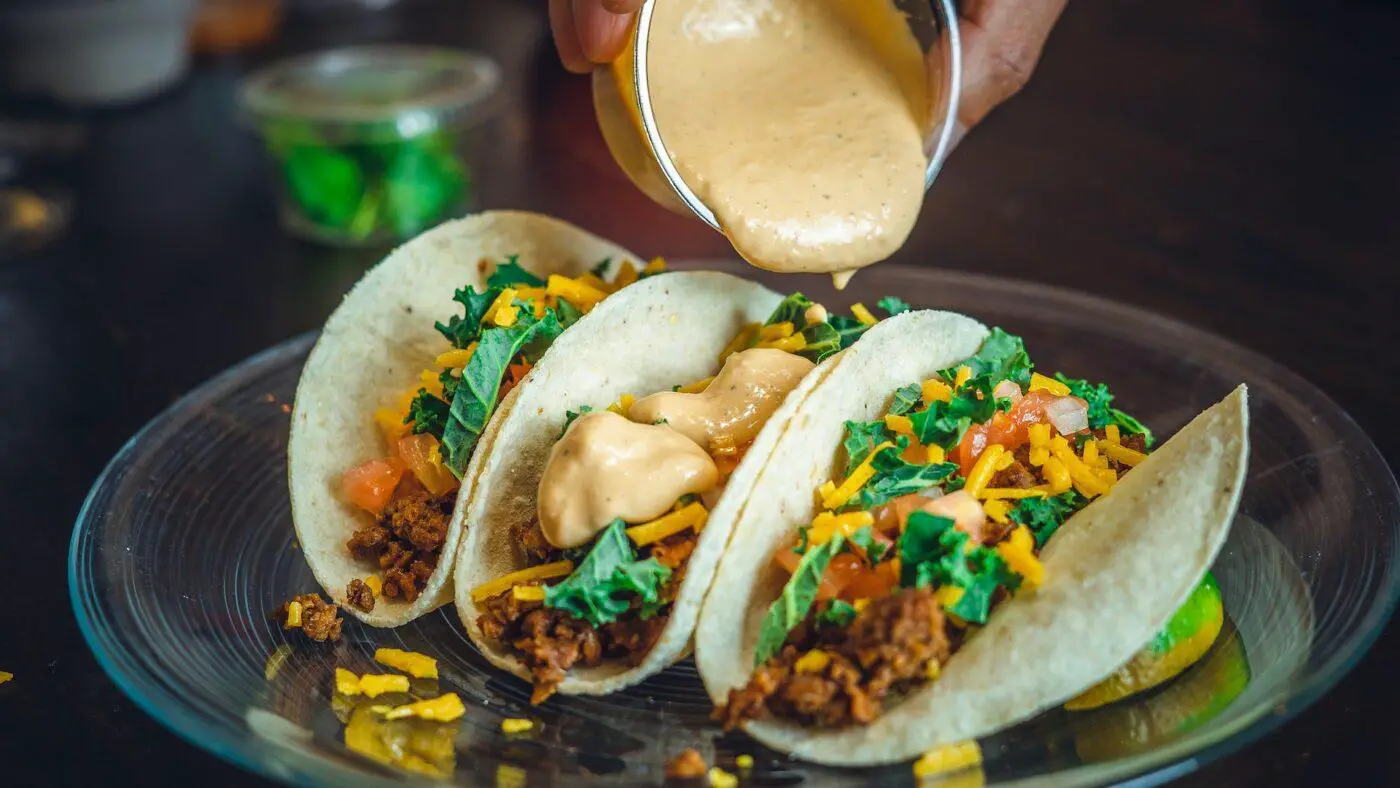 Preparing a vegan taco night is exciting and can be as flavorful as any meat-based counterpart. Start with your base: vegan taco meat. You can make a delightful mix using lentils packed with protein and fiber.
Preparing a vegan taco night is exciting and can be as flavorful as any meat-based counterpart. Start with your base: vegan taco meat. You can make a delightful mix using lentils packed with protein and fiber.
Ingredients:
- 1 cup green lentils
- 1 tbsp olive oil
- 1 diced onion
- 2 minced garlic cloves
- 1 chopped bell pepper
- 2 tsp chili powder
- 1 tsp cumin
- Salt to taste
Instructions:
- Rinse and cook lentils until tender.
- In a pan, heat olive oil over medium heat and sauté onion, garlic, and bell pepper until softened.
- Stir in the chili powder, cumin, and cooked lentils, and cook for another 5 minutes.
- Adjust seasoning with salt.
Now, let’s assemble your tacos.
Taco Assembly:
- Vegan taco meat (lentil mixture)
- Corn tortillas, heated
- Fresh salsa
- Optional toppings such as lettuce, vegan cheese, avocado
Lay out warm tortillas, spoon the lentil mixture onto each one, and top with a hearty scoop of fresh salsa. Add other toppings as you like to build your dream taco.
Key Takeaway: A delicious and satisfying vegan taco is all about the seasoning and fresh ingredients. The blend of chili powder and cumin with lentils creates a fantastic base that carries the tacos’ flavor profile—and it’s all about personalizing your toppings to seal the deal.
Condiments and Enhancements
Enhancing the flavor of your plant-based meat is as much about the ingredients you mix in as the technique you use to cook it. A well-chosen condiment or marinade can elevate your dish from good to great by adding depth and richness.
Bold Flavors: Begin with vegan Worcestershire sauce; it’s a game-changer for giving that umami kick. Just a dash can add complexity to your plant-based patties or loaves.
Spice it Up:
- Soy Sauce: A soy sauce splash can bring out the meatiness of plant-based proteins.
- Spices: Feel free to experiment. Common choices include:
- Paprika
- Garlic powder
- Onion powder
- Black pepper
- Sage: It’s not just for poultry; sage adds a herbaceous note to plant-based meats, enhancing their savory character.
Marinades Matter:
Creating a good marinade is all about balancing flavors. Mix your base, like olive oil or vegan broth, with Worcestershire or soy sauce, throw in your spices and sage, and let your plant-based meat bathe in this mixture for at least an hour before cooking. This will help infuse it with flavor and tenderness.
Remember: Always taste as you go and adjust the seasonings to your liking.
Key Takeaway: Get creative with your seasonings, and don’t be afraid to experiment. The right combination of condiments and enhancements will ensure your plant-based meat is bursting with flavor.
Frequently Asked Questions
In this section, we’ll tackle some common queries about making plant-based meats, giving you the low-down on ingredients, recipes, factory processes, flavor techniques, nutrition, and even a nifty use for nuts!
What are some popular ingredients used to create vegan ground beef alternatives?
There’s a whole pantry of items you can use for plant-based ground beef. Key players usually include textured vegetable protein (TVP), lentils, beans for their meaty texture, and beets for a convincing color. Grains like quinoa or rice can also add substance.
Key takeaway: Diverse ingredients mean you can custom-make your vegan ground beef to your tastes!
Can you provide a simple recipe for making plant-based chicken at home?
Absolutely! Start with vital wheat gluten (for chewiness) and add chickpea flour and nutritional yeast for flavor. Season with poultry spices, simmer in a flavorful broth, and there you have it: a simple seitan chicken ready to star in your next meal.
Key takeaway: Homemade plant-based chicken is a breeze with the right ingredients and spices.
What is the typical process for producing plant-based meats in a factory setting?
First, they mix plant proteins with water and form a dough-like mixture. Next, the mixture often goes through an extrusion process, where it’s cooked and shaped under pressure to mimic the fibrous structure of the meat. After that, it’s seasoned, cooked again, and packaged.
Key takeaway: High-tech extrusion is the secret behind the meaty texture in many commercial plant-based meats.
What techniques can be used to give plant-based meat a flavorful taste similar to animal meat?
Many use umami-rich ingredients like soy sauce, mushrooms, tomatoes, and nutritional yeast to mimic meat’s flavor. Smoking, grilling, or marinating also brings out a depth of flavor, and spices like garlic powder and smoked paprika can work wonders, too.
Key takeaway: It’s all about layering flavors to build up that savory, meaty taste you’re craving.
What nutritional considerations should be taken into account when consuming plant-based meats?
While plant-based meats can be healthier, check for protein content, essential amino acids, and added nutrients like B12 or iron. Also, watch for sodium levels and additives in some store-bought options.
Key takeaway: Balance is essential, so consider the big picture of your diet when choosing plant-based meat.
How can nuts, like walnuts, be used to make a convincing vegan ground beef?
Walnuts are fantastic for their texture and nutrient-dense profile. Just pulse them in a food processor with some seasoning until crumbly, then sauté with spices, soy sauce, or liquid smoke to enhance the flavor. They’ll give you a beefy bite that’s both delicious and wholesome.
Key takeaway: Ground walnuts can be your go-to for an easy, nutritious twist on vegan ground beef.

